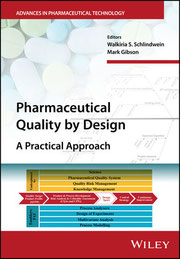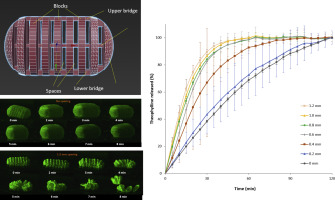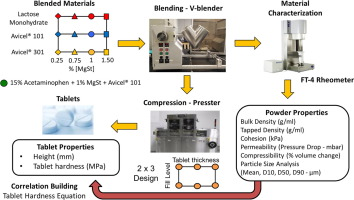- Home
- Blog
- News
- Basics
- Sources
- Agencies, Regulatory & Organisations
- CERSI Excipients Browser
- Excipient Report
- Excipient DMF List
- EXCiPACT Certified Companies
- Excipient Documentation
- Excipient EINECS Numbers
- Excipient E-Numbers
- FDA Inactive Ingredient List
- FDA GRAS Substances (SCOGS) Database
- IPEC Americas
- USP - U.S. Pharmacopeia
- Definitions
- Whitepapers / Publications
- Supplier
- Services
- Media
- Events
- 1st pharmaexcipients Poster Award
- Event Calendar
- Events featured by pharma-excipients
- 4th Annual Formulation & Drug Delivery Congress
- DDF Summit
- ExcipientFest Americas
- ExcipientFest Asia
- Global CompliancePanel
- International Conference and Exhibition on Pharmaceutics & Novel Drug Delivery Systems
- Formulation & Drug Delivery USA Congress
- Laboratory Medicine 2018
- Making Pharmaceuticals Europe
- Making Pharmaceuticals Exhibition
- Pharma Integrates
- PharmaExcipients China @CPhI China
- TTC Technology Training Center
- Jobs
- Online Sourcing
- Contact
31. March 2018
While some drug innovations are the result of surprises during research phases, a surprise that occurs during development--such as formulation or manufacturing problems--could result in approval delays or failure for a drug product.
To reduce the risk of late-phase surprises, some experts recommend that additional screening efforts in early development can smooth the pathway in later development stages. Developers of promising compounds emerging from drug discovery must balance the need to bett
31. March 2018
The growing popularity of direct-compression process necessitates an ideal filler–binder that can substitute two or more excipients. Pregelatinization of starches significantly improves swelling and flow properties but produces tablets with low mechanical strength.
29. March 2018
Docetaxel (DTX) is a chemotherapy drug that can be used for different type of cancers. Due to polysorbate 80, the excipient in the formulation, acute hypertensivity reaction is observed after intravenous administration. The development of oral formulation for DTX has always been problematic as the bioavailability of the drug is shown to be low due to P-glycoprotein efflux transporters and the intestinal metabolism by CYP3A4 enzymes. The objective of this study is to develop novel DTX in situ...
28. March 2018
Mini-tablets with diameters of 2.0, 2.5, and 3.0 mm are coated in two different lab-scale fluidized bed coaters equipped with a Wurster draft tube. The main focus of the research is to evaluate the inter-particle coating variability, and to assess the contribution of cycle time variation. Cycle times are measured using a photoluminescent tracer with a detector mounted on the top of the draft tube. The number of passes variability is represented from 5 to 28% of the total coating variability....
28. March 2018
Production of nanosuspension for drug bioavailability improvement has been accepted and frequently used in pharmaceutical industry. Normally, the preparation started from crystalline drug. However, some previous studies found that amorphous drug powder obtained from processes such as spray-drying might contribute to nanosizing process, i.e. reduced homogenization cycles and smaller achievable particle size. The mechanism behind this improved behavior was still unclear. In order to...
27. March 2018
Particle surface modification is becoming a vital strategy in the pharmaceutical industry for “difficult to formulate” APIs. Most surface modification techniques, however, alter innate particle properties either chemically or physically. These surface modification technologies involve the use of elevated temperatures, high pressures, and/or solvents, making these processes highly unsuitable for unstable APIs that are degraded when exposed to such conditions. Aston Particle Technologies...
26. March 2018
A novel hybrid microparticulate system composed of poly(lactic-co-glycolic) acid (PLGA) nanoparticles and submicron medium-chain triglyceride (MCT) droplets was fabricated to overcome the pH-dependent solubility and precipitation challenges associated with a model poorly water-soluble weak base, cinnarizine (CIN). Molecular CIN was confined within both the lipid and polymer phase of PLGA-lipid hybrid (PLH) and PLGA-lipid-mannitol hybrid (PLMH) particles, which offered significant...
26. March 2018
Spray-dried protein formulations commonly require stabilising excipients to prevent protein degradation during processing and storage, and trehalose has been commonly used. The purpose of this work was to evaluate melibiose in spray-dried protein formulations in comparison to trehalose. The protein-activity-preserving efficacy, process behaviour and storage stability were studied. Spray drying of β-galactosidase was carried out using different process temperature, drying air flow and feed...
25. March 2018
Fused deposition modelling (FDM) 3D printing has shown the most immediate potential for on-demand dose personalisation to suit particular patient's needs. However, FDM 3D printing often involves employing a relatively large molecular weight thermoplastic polymer and results in extended release pattern. It is therefore essential to fast-track drug release from the 3D printed objects. This work employed an innovative design approach of tablets with unique built-in gaps (Gaplets) with the aim of...
25. March 2018
As the pharmaceutical industry modernizes its manufacturing practices and incorporates more efficient processing approaches, it is important to reevaluate which process design elements affect product quality and the means to study these systems. The purpose of this work is to provide insight on a methodology to correlate the effect of raw material properties to equipment and process performance using both data-driven and semi-empirical models. In this work, lubricated blends of...










